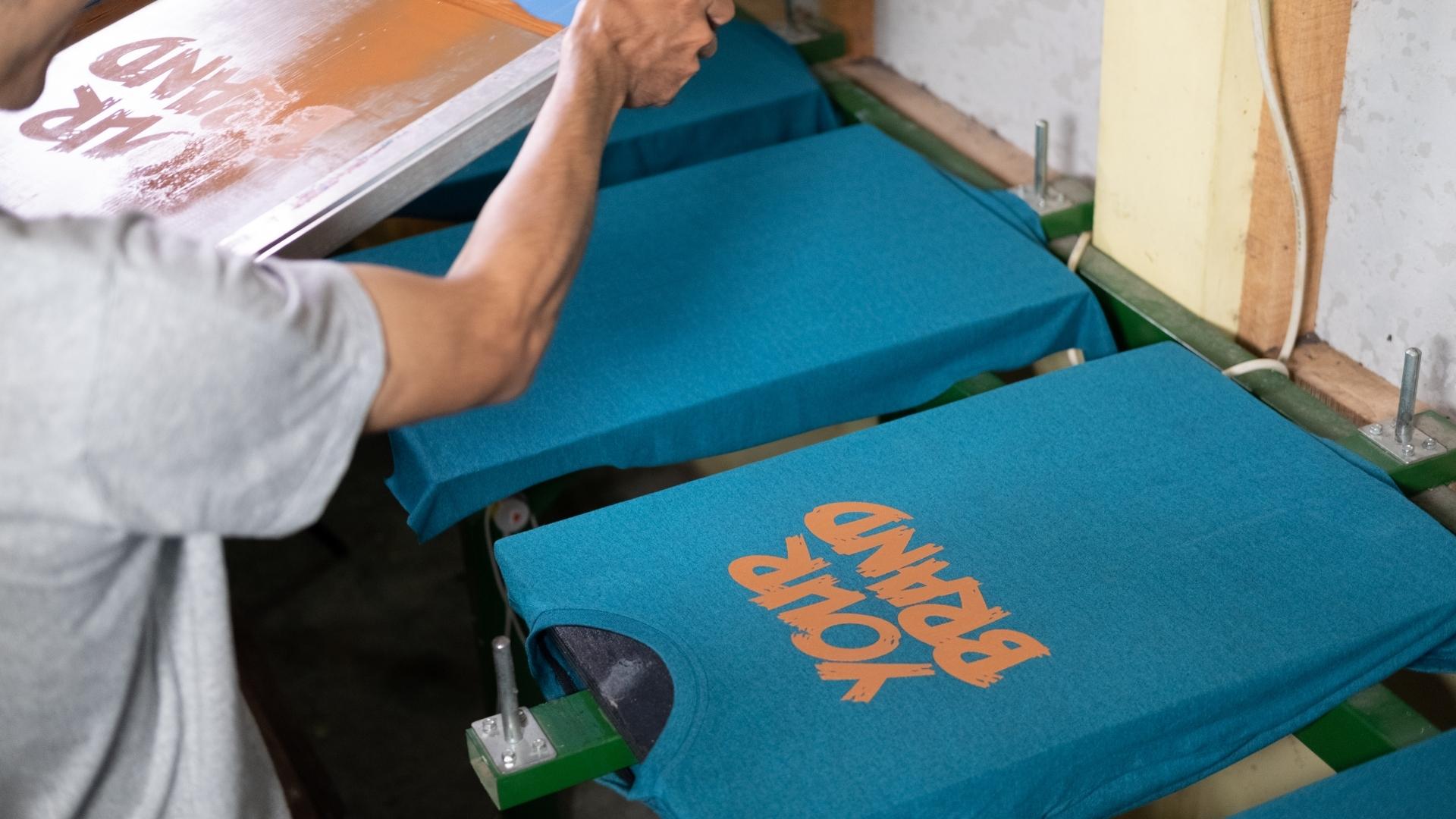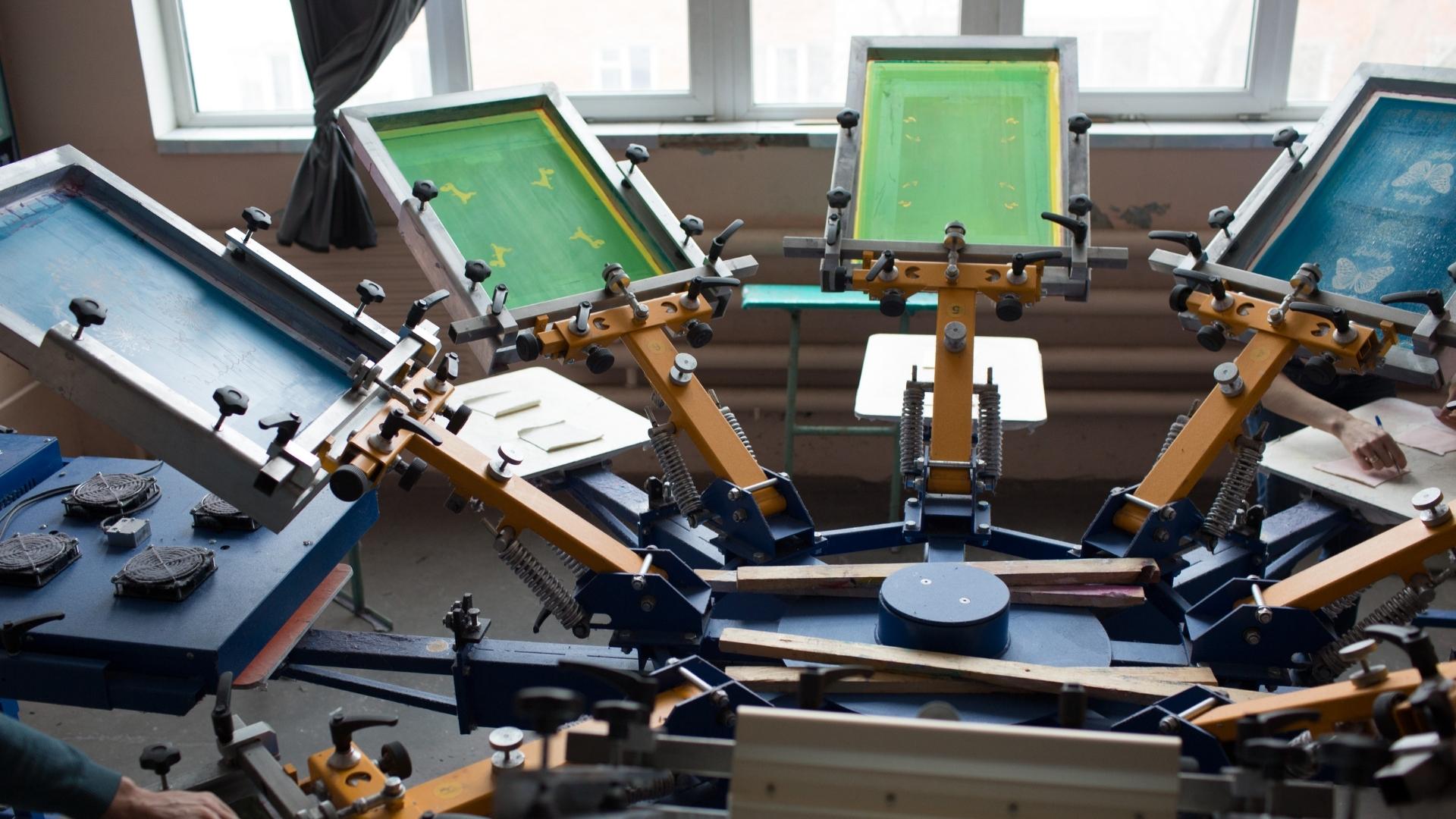ChatGPT said: What customers are saying in 10:9 Design reviews: insights
Wiki Article
The Vital Guide to Recognizing Screen Printing and Its Versatile Makes use of
Screen printing has a rich background that dates back to old times, developing right into an advanced strategy utilized across numerous industries today. This guide checks out the intricacies of the screen printing process, describing its applications in style, advertising and marketing, and home décor - 10:9 Design Screen Printing Texas. Recognizing these basics can open creative possibility for both commercial and imaginative tasks. The following sections will disclose crucial tips and methods to improve one's screen printing undertakingsThe History of Screen Printing
Screen printing has roots that map back centuries, its advancement mirrors the imaginative and technological innovations of numerous cultures. Coming from ancient China, the strategy was originally made use of for embellishing fabrics and later spread to Japan, where it became indispensable to Ukiyo-e woodblock printing. The approach shifted to Europe in the 18th century, where it obtained appeal amongst craftsmens and business printers. The innovation of picture solution in the 20th century transformed screen printing, permitting for more elaborate layouts and greater efficiency. Artists like Andy Warhol further drove its popularity, using the tool to develop renowned jobs that mixed commercialism and art. By the late 20th century, screen printing had developed itself as a flexible method, employed in style, marketing, and art. Today, it continues to develop, incorporating digital technology and expanding its applications throughout numerous markets.The Screen Printing Process Explained
Screen printing changes creative visions into concrete styles via a series of specific actions. A picture is produced and then transferred onto a screen, normally made of great mesh textile stretched over a framework. A light-sensitive emulsion is put on the screen, which is subjected to light, hardening in areas not covered by the picture. After cleaning out the unhardened solution, a pattern is developed.Next, the screen is placed over the substrate, whether it be material, paper, or another product. Ink is after that pushed through the open areas of the pattern utilizing a squeegee, depositing the layout onto the substratum listed below. This procedure can be repeated for several shades, needing different displays for each and every tone. Ultimately, the printed product is healed using heat to ensure the ink sticks properly, causing a long lasting, vibrant style on-line.
Types of Screen Printing Techniques

Furthermore, specialized methods, such as discharge screen printing, eliminate color from the material to produce softer prints, while aluminum foil screen printing applies metallic foil to attain a shiny finish (10:9 Design Screen Printing). Each method supplies distinctive qualities, satisfying various imaginative needs and production scales, eventually broadening the opportunities within the screen printing domain
Applications of Screen Printing in Different Industries

Furthermore, the signs and advertising sectors make use of screen printing for creating attractive displays and banners. This approach permits bold shades and intricate layouts that record attention. In electronic devices, screen printing is utilized for applying conductive inks to circuit boards, necessary for part links. In addition, the home style sector accepts screen printing to check here create distinctive designs on textiles and wall art. In general, screen printing functions as an important device across varied fields, improving items with individualized and aesthetically appealing graphics.
Tips for Effective Screen Printing Projects
While taking on a screen printing task, cautious attention to detail can significantly enhance the last result. Picking top quality products is crucial; this consists of the screen, inks, and substrates. Utilizing ideal mesh counts can influence ink deposition and detail resolution. Prep work is equally essential; thorough cleansing of displays and correct exposure times ensure crisp prints.Next, accurate enrollment is vital for multi-color prints. Using alignment tools can aid attain precise layering. Additionally, screening prints on scrap products before manufacturing assists recognize potential problems without squandering sources.

Frequently Asked Inquiries
What Products Are Best for Screen Printing on Fabric?
Cotton and polyester blends are perfect for screen printing on fabric because of their durability and ink absorption. In addition, specialized textiles like silk or canvas can generate distinct textures and finishes, improving the overall layout quality.Just how Do I Clean and Maintain Screen Printing Devices?
To preserve and clean screen printing tools, one need to on a regular basis wash displays with appropriate solvents, evaluate mops for wear, lubricate relocating components, and shop all products in a dry, dust-free atmosphere to extend their life expectancy.What Are the Ecological Impacts of Screen Printing?
Screen printing can have significant environmental effects, consisting of chemical waste from solvents and inks, water use during cleaning processes, and power consumption. Lasting practices and eco-friendly materials are crucial for minimizing these negative effects.Can Screen Printing Be Done in your home Properly?
Screen printing can be efficiently done at home with the right products and strategies. Hobbyists can produce top quality prints, though success relies on their skill level, equipment, and understanding of the procedure involved.
What Are the Prices Connected With Beginning a Screen Printing Service?

Beginning a screen printing company involves prices for tools, materials, and work space. Initial expenses commonly range from a few hundred to a number of thousand bucks, depending on the range, quality of machinery, and preferred production capability.
Screen printing has an abundant history that dates back to old times, progressing into a sophisticated technique made use of throughout numerous markets today. Another method, rotating screen printing, employs cylindrical screens, promoting continual printing on textile rolls, thereby enhancing efficiency for large manufacturings. Additionally, specialty methods, such as discharge screen printing, remove dye from the material to produce softer prints, while aluminum foil screen printing uses metal aluminum foil to achieve a glossy coating. In the fashion sector, screen printing is commonly made use of to produce vibrant layouts on garments, enabling brand names to showcase their special designs. Cotton and polyester blends are suitable for screen printing on textile due to their resilience and ink absorption.
Report this wiki page